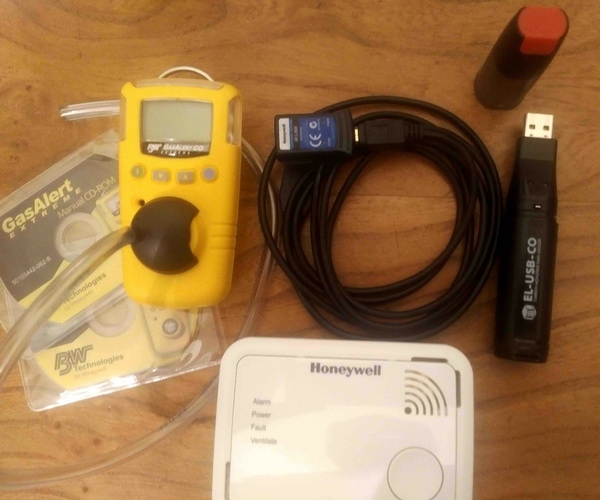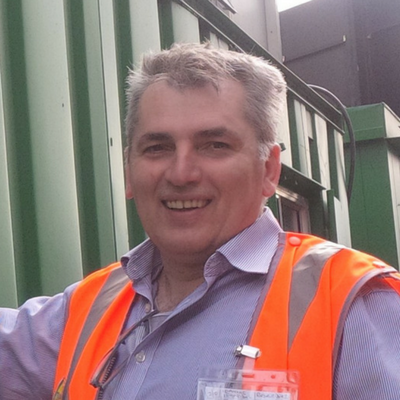Opinion
Investigating carbon monoxide poisoning in private rented homes
In early 2016 I was contacted by The National Grid with regards to Carbon Monoxide (CO) poisoning. During the call I was made aware of an investigation about a number of C0 poisoning incidents following an ambulance call and A&E treatment over the weekend.
According to National Grid, the common denominator in all cases was that the five accommodation units were located above restaurants and all thanks to their good luck and to their landlord, had CO detectors fitted.
National Grid initially said they were perplexed as to what could cause all the detectors to switch on at the same time, around 03:00 hours in the morning, as they couldn’t find anything wrong with the connections or the appliances thus they had to turn their attention to the neighbouring commercial premises.
It took them no time to identify the culpable parties which in this case were the two Mediterranean type restaurants located just below the flats.
National Grid advised that upon completion of cooking on the grill the live charcoal was covered and left there to burn out, the ventilation system was switched off and doors and windows were locked up. As a result, CO replaced oxygen due to incomplete combustion which subsequently permeated through the fabric of the building to the flats above.
We immediately got in touch with the residents and the proprietors of the commercial premises in order to make sure that all the necessary steps were taken to eliminate the possibility of this happening again.
Needless to say, we received the full cooperation of both the proprietors. As a matter of fact, the restaurants installed upon our request high specification CO monitoring detectors with the capacity to display and monitor CO levels continuously (CO is measured in particles per million).
The restaurants changed their practices by adding additional ventilation ducting to provide fresh air from the outside and consistently every night after the end of cooking on the coal grill removed all live charcoal outside where it was extinguished with water.
On a broader scale and in conjunction with colleagues, Health & Safety liaison group and others we started a campaign aiming to inform, educate and enforce should the need arise.
In more detail, we acted straightway and recorded with our equipment a number of CO readings at the restaurants, sent advisory letters with self-explanatory contents and thus we received very positive feedback.

However, this is an ongoing dynamic campaign and it is positive that other stakeholders are starting to engage and take an active role in promoting precautions and installation of CO monitoring systems (in homes and commercial premises).
What is Carbon Monoxide (CO)?
CO is a colourless and odourless gas, making its presence difficult to detect. It is formed when domestic fuels such as gas, coal, wood and charcoal are burned and by petrol engines. When fuel burns in an enclosed room, the oxygen in the room is gradually used up and replaced with carbon dioxide. If carbon dioxide builds up in the air, the fuel is prevented from burning fully and starts releasing carbon monoxide instead.
Carbon monoxide is produced by burning fossil fuels such as charcoal as a result of incomplete combustion and high levels can be produced in confined spaces such as kitchens where there is inadequate ventilation.
Carbon monoxide is dangerous to humans because when it is inhaled it replaces oxygen in the blood and can cause illness or can even be fatal.
The main problem is that it is colourless and odourless so it cannot be detected by humans.
Symptoms of carbon monoxide poisoning include:
- Headache
- Breathlessness
- Dizziness
- Collapse
- Unconsciousness
- Suffocation
There are more than 400 admissions to hospital with CO poisoning in England each year and around 40-50 deaths.
How is Carbon Monoxide (CO) poisoning caused?
CO is so dangerous because it binds very tightly to haemoglobin in the red blood cells and so reduces the amount of oxygen which can be carried in the bloodstream. Haemoglobin is the molecule in the blood that oxygen binds to in order to be carried around the body. The binding of CO to haemoglobin is actually more than 200 times stronger than for oxygen, so the CO effectively takes up all the space on the haemoglobin.
In addition, CO interferes with the delivery of oxygen from haemoglobin into the body’s tissues.
These effects severely reduce the oxygen carrying capacity of the blood and limit the availability of oxygen in the body, with the brain and heart being particularly vulnerable.
This can lead to anoxic brain injury. Pregnant women and the foetus are particularly susceptible to the toxic effects of CO.
In my opinion, landlords SHOULD always install CO detectors in their properties, particularly above commercial premises. The cost is minimal and the actual detectors last 8 – 10 years with the expiry date written on the detector.
Landlords should also be alert to any rented accommodation which may have charcoal grills in a commercial premises below, thereby increasing the level of risk and needing. By raising awareness of this issue, we can all help to save lives from CO poisoning.
Ioannis Ifantidis MCIEH is the Lead Officer in Health & Safety at the London Borough of Redbridge, Email ioannis.ifantidis@redbridge.gov.uk, Tel: 0208 708 4310.
Please note that the views and opinions expressed in these guest blogs are those of the author and do not necessarily represent the views of London Property Licensing. These blogs are designed to stimulate discussion and debate within the property industry.
For all the latest news and comment, you can sign up for the free London Property Licensing newsletter here.





